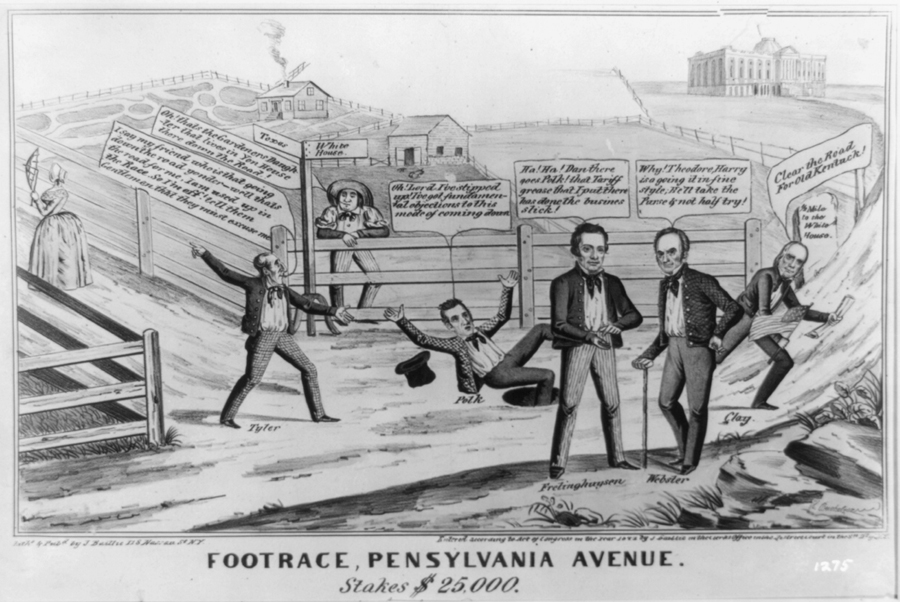Guided Primary Source Analysis: Footrace, Pennsylvania Avenue

Summary: The race for a $25,000 prize (the president’s salary) is a metaphor for the 1844 campaign. The favored contender here is Henry Clay. The other runners are James K. Polk and John Tyler, while commentaries are offered by a farmer, vice presidential candidate Theodore Frelinghuysen, and Whig stalwart Daniel Webster. The print probably appeared before Tyler officially withdrew as a presidential candidate on August 20. Henry Clay is in the lead, about to pass the half-mile marker to the White House. The Capitol appears in the distance. Clay holds an American flag in one hand and a document in the other, and begins to ascend the steeply inclined final stretch. Behind him Democratic nominee James K. Polk stumbles and falls, his foot in a pothole. Clay: “Clear the Road for Old Kentuck!” Polk: “Oh! Lord I’ve slipped up! I’ve got fundamental objections to this mode of coming down.” Frelinghuysen: “Ha! Ha! Dan there goes Polk! that Tariff grease that I put there has done the business slick!” Support for a tariff was a plank in the Whig platform which was extremely popular in the Northeast. Webster replies: “Why Theodore, Harry [Clay] is a going it in fine style. He’ll take the Purse & not half try!” A third contestant, incumbent President John Tyler, notices a woman traveling down another road toward Texas. The woman is elegantly dressed, and holds a parasol which obstructs the view ahead of her. Tyler questions a farmer standing nearby, “I say my friend who is that going down the road yonder . . .” The farmer replies “Oh! thats the Gardeners Daughter that lives in yon house there down the road!” “Well thats the road for me,” Tyler continues, “I am used up in the Race. So I’m off! tell them Gentlemen that they must excuse me.”
According to the cartoon summary, who is the favored contender? What details in the cartoon—positioning, symbols, text labels—support this view?
Use the Primary Source Nexus search box to find information about the candidates to learn who won the 1844 presidential election.
What other observations, reflections or questions does this source inspire? Let us know!
